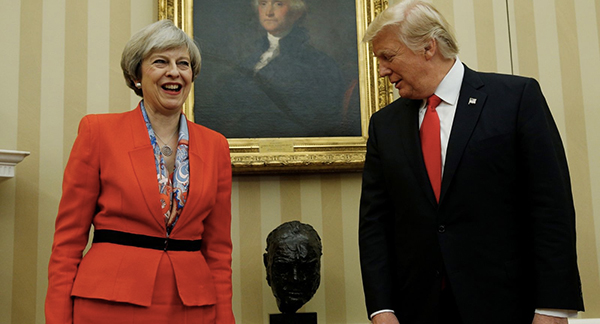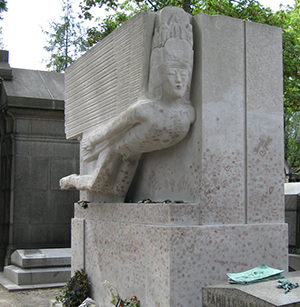That Churchill bust … the Irish connection
Published in Issue 3 (May/June 2021), News, Volume 29The Churchill bust in the Oval Office—or, to be precise, its absence—is exercising minds on both sides of the Atlantic once again.
By Úna Ní Bhroiméil
The bronze bust of Churchill commissioned by the British War Office in 1945 became a point of conflict initially in 2012 amid claims that President Obama had removed it from the Oval Office, claims repeated by Boris Johnson in 2016. In 2017 it was claimed that President Trump had removed a bust of Martin Luther King Jr from the Oval Office and replaced it with Churchill to mark the ‘special relationship’ between the United Kingdom and the United States. It turned out that nothing had been removed; there were two Churchill busts in the White House, one of which was on loan, and everyone seemingly loved Churchill. Now it has been suggested that, being an Irish-American whose ancestors fled the Famine, President Biden has deliberately excluded Churchill from the seat of American power.

Above: British Prime Minister Teresa May and President Donald Trump discuss the artistic merits of Jacob Epstein’s bust of Winston Churchill.
The enjoyable colour created by this ongoing discussion rarely mentions the sculptor of the bust, Jacob Epstein. Long regarded as a ‘controversial’ modernist sculptor, he is often remembered as a great British artist. He was in fact a native New Yorker, a second-generation Polish Jew whose father chose the name Epstein over his own Brubinski on arrival in the United States in 1865. Although Epstein himself begins his autobiography with a description of the vibrancy and cosmopolitanism of the Lower East Side of the late nineteenth and early twentieth centuries, he left for Paris in 1905 and spent the rest of his life in England, mostly in London, where he became a naturalised Briton in 1911.
It was in London in 1910 that he met John Quinn, Irish-American lawyer and patron of the arts. From Tiffin, Ohio, and a second-generation Irish-American, Quinn became known in Irish nationalist and cultural circles as the ‘Man from New York’ because of his wealth and his readiness to spend it on causes dear to his heart. He became Epstein’s patron and amassed what Evelyn Silber maintains was the ‘most important collection formed during the artist’s lifetime’ of his work—26 pieces in all, including such important works as Venus, the Birds, Mother and Child, and carvings in flenite.

Jacob Epstein’s controversial tomb of Oscar Wilde in the Père Lachaise cemetery in Paris, completed in 1914. The testicles were removed in an act of vandalism in 1961.
Initially Quinn gave money and support to Epstein to fight the hullaballoo over Epstein’s tomb of Oscar Wilde in the Père Lachaise cemetery in Paris. Quinn hoped that the Oscar Wilde monument would make Epstein known in America as well as on the European continent, but the Washington Herald in October 1912 pointed out that the sculptor’s ‘unblushing realism’ drew controversy. The first time that attention was drawn to Epstein’s work in America was when Quinn loaned his own bust of Euphemia Lamb to the Armory Show in 1913. This explosive international exhibition of Modern Art, held in New York, became a springboard for the appreciation and collection of modern art in the United States. The bust, as Quinn wrote to Epstein, ‘made quite a little hit’, and Quinn continued buying Epstein’s work and publicising him in America, writing an article about Epstein for Vanity Fair in 1917 and having Epstein’s artworks at his apartment photographed in June 1919 for a first book on Epstein.
Part of getting Epstein known as an artist in the United States was to keep him out of the First World War trenches and exempt from conscription after it was introduced in Britain in 1916. Quinn, who was awarded the French Legion of Honour for his wartime support of French artists (he believed that buying their work mitigated the impact of the war on their lives and livelihoods), tried his best to have Epstein exempted. He cabled the Earl of Derby in the war office and Col. Buchan in the Foreign Office, ‘respectfully’ suggesting war work ‘other than trenches’ for Epstein for the sake of Britain’s future position in the world of art. He was, he wrote, too valuable an artist to be sent to the front. The army disagreed and, after a number of appeals, Epstein was conscripted. He never made it to the trenches, however, suffering a complete breakdown and being discharged to a military hospital in 1918.
A collector not just of Epstein but also of Brancusi and Picasso, Quinn was at the cutting edge of modernity in early twentieth-century New York. His untimely death from cancer in 1924, however, led to the scattering of his art collection. Epstein’s Churchill bust was not commissioned until 1945, but the links between Irish-America and the bust’s sculptor go back to that fateful meeting in the Café Royal in London in 1910—a story of Ireland, New York and London, brought together by the patronage and perspicacity of Irish-American John Quinn.
Úna Ní Bhroiméil lectures in history at Mary Immaculate College, Limerick.
















